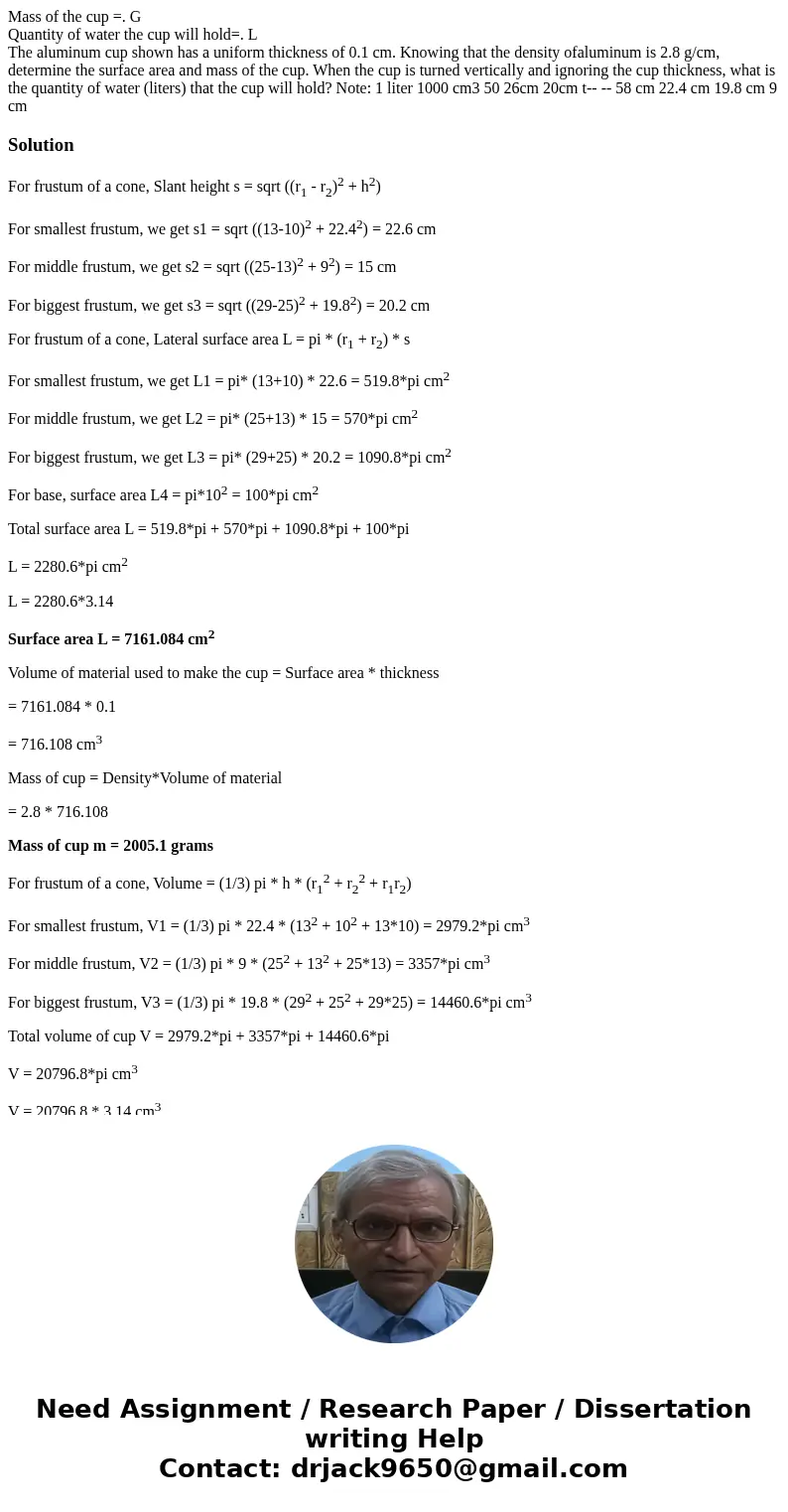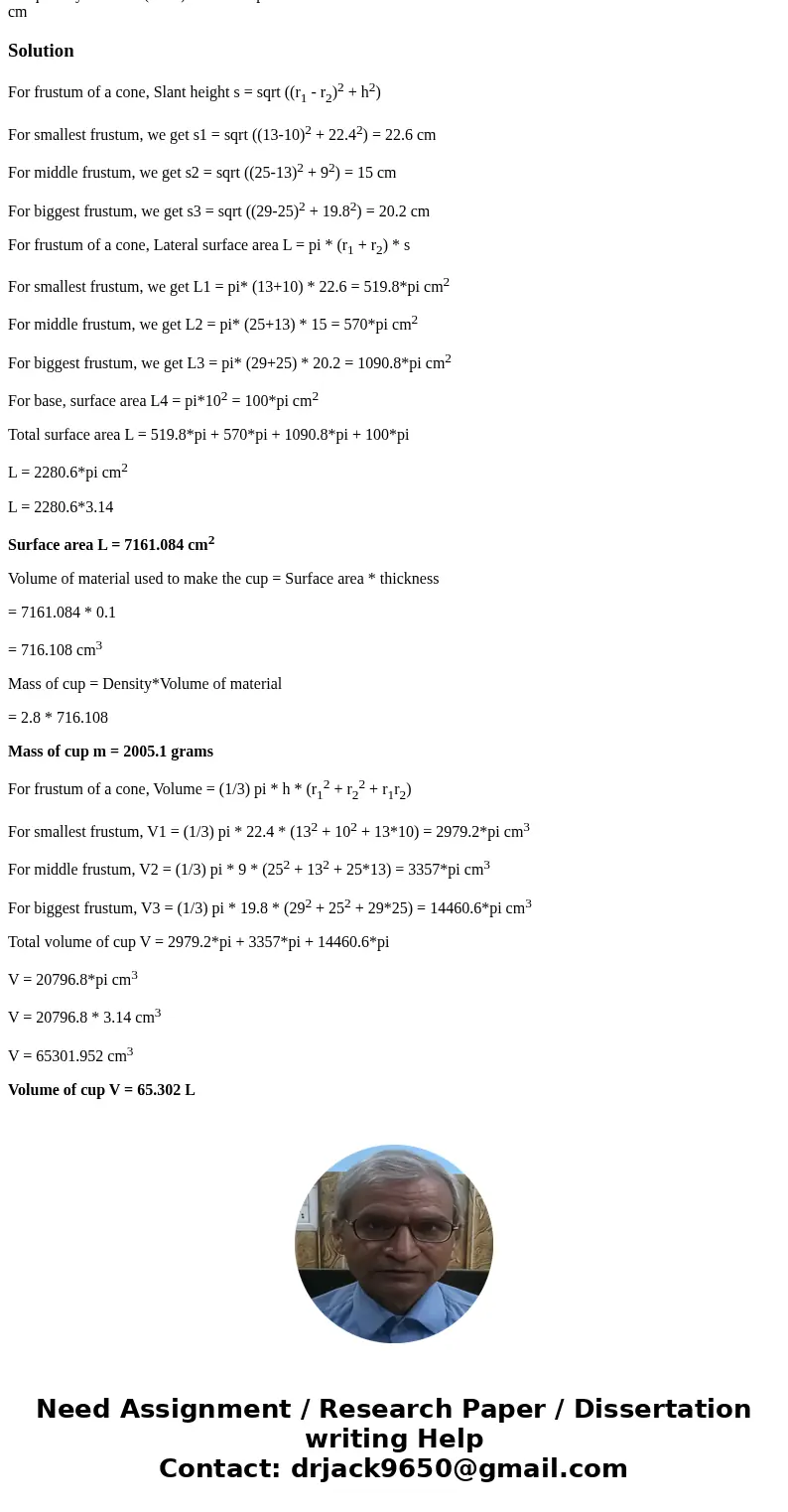Mass of the cup G Quantity of water the cup will hold L The
Solution
For frustum of a cone, Slant height s = sqrt ((r1 - r2)2 + h2)
For smallest frustum, we get s1 = sqrt ((13-10)2 + 22.42) = 22.6 cm
For middle frustum, we get s2 = sqrt ((25-13)2 + 92) = 15 cm
For biggest frustum, we get s3 = sqrt ((29-25)2 + 19.82) = 20.2 cm
For frustum of a cone, Lateral surface area L = pi * (r1 + r2) * s
For smallest frustum, we get L1 = pi* (13+10) * 22.6 = 519.8*pi cm2
For middle frustum, we get L2 = pi* (25+13) * 15 = 570*pi cm2
For biggest frustum, we get L3 = pi* (29+25) * 20.2 = 1090.8*pi cm2
For base, surface area L4 = pi*102 = 100*pi cm2
Total surface area L = 519.8*pi + 570*pi + 1090.8*pi + 100*pi
L = 2280.6*pi cm2
L = 2280.6*3.14
Surface area L = 7161.084 cm2
Volume of material used to make the cup = Surface area * thickness
= 7161.084 * 0.1
= 716.108 cm3
Mass of cup = Density*Volume of material
= 2.8 * 716.108
Mass of cup m = 2005.1 grams
For frustum of a cone, Volume = (1/3) pi * h * (r12 + r22 + r1r2)
For smallest frustum, V1 = (1/3) pi * 22.4 * (132 + 102 + 13*10) = 2979.2*pi cm3
For middle frustum, V2 = (1/3) pi * 9 * (252 + 132 + 25*13) = 3357*pi cm3
For biggest frustum, V3 = (1/3) pi * 19.8 * (292 + 252 + 29*25) = 14460.6*pi cm3
Total volume of cup V = 2979.2*pi + 3357*pi + 14460.6*pi
V = 20796.8*pi cm3
V = 20796.8 * 3.14 cm3
V = 65301.952 cm3
Volume of cup V = 65.302 L


 Homework Sourse
Homework Sourse